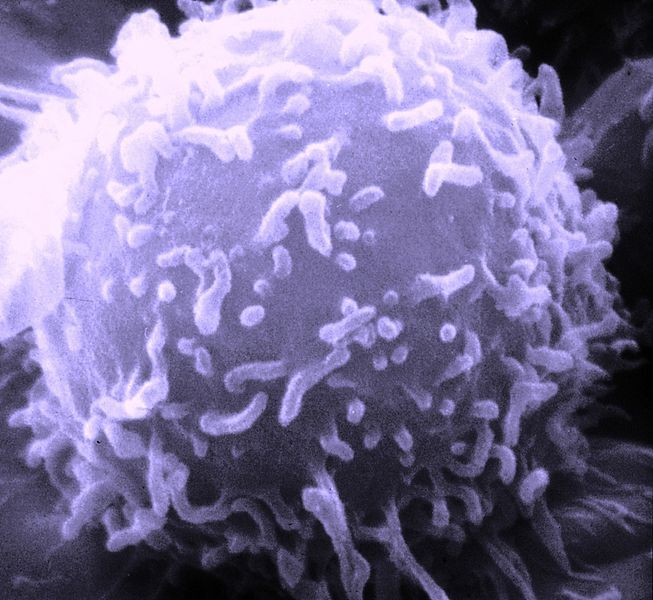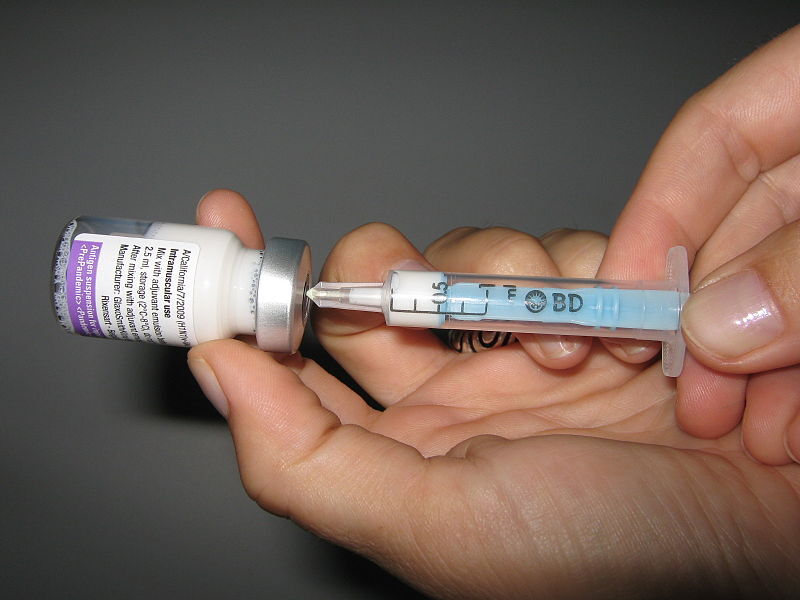Immunity is the ability to resist the onset of disease by fighting the infectious agent or pathogen that causes it. Immunity can be natural or stimulated by vaccination.
The body has a defence system against infectious agents that cause disease: the immune system. This defence function is performed by the white blood cells and antibodies that the organism produces. When the body is able to resist an infectious agent, it is considered to be immune to the disease. White blood cells act in two main ways: by destroying infectious agents through phagocytosis or by secreting antibodies that neutralize them.

A white blood cell, the main component of the human immune system
When an organism comes into contact with a pathogen for the first time, the immune system must produce new antibodies to fight it. This reaction may take several days or even weeks to produce enough of the right antibodies. If the pathogen is dangerous, this delay gives it time to cause significant damage to the organism.
However, if a second infection occurs, the immune system reacts more efficiently because it has memorized how to make the appropriate antibodies. Also, some antibodies remain in the organism, even when the infectious agent is absent. As a result, the body already has antibodies to fight the infectious agent and the production of new antibodies is accelerated. Since neutralization occurs more quickly, the consequences of the disease are significantly less severe.
There is a way to enable the organism to fight pathogens without having to suffer the harm of an initial infection: vaccination.
A vaccine is a substance that stimulates the immune system to make antibodies that immunize the organism against a particular disease.
Vaccines are used to protect people’s health by preventing the development of certain diseases with potentially dangerous consequences. During vaccination, attenuated, or weakened, infectious agents are introduced into the organism. An attenuated infectious agent is harmless to health because it cannot cause disease. However, when in contact with it, the immune system reacts by making antibodies to fight it. In this way, an organism develops an immune memory. If an infectious agent comes in contact with an organism that has been vaccinated against it, it will be fought quickly because the immune system already has the antibodies to fight it and can quickly produce new ones.
Vaccines are usually given by injection, although some are given orally. Aside from immunizing each individual, epidemics can be prevented by conducting vaccination campaigns for entire populations. A person may also use vaccinations before travelling to be protected against diseases that are prevalent in other countries. There are vaccines against many diseases: diphtheria, whooping cough, tetanus, chickenpox, measles, rubella, hepatitis A and B, yellow fever, typhoid, meningitis, etc.

The manufacturing of vaccines is the process of creating viruses or bacteria that have lost their disease-causing power but have retained their identifiable characteristics. Upon contact, the body identifies them and stimulates the production of specific antibodies without developing the disease. The manufacturing of a vaccine always begins with a large-scale cell culture of the pathogen. Then, the cultured cells must be treated to render them harmless. Two main processes are used to inactivate viruses or bacteria.
Live vaccines are produced using strains of live bacteria or viruses that have been treated chemically to lose their ability to cause the disease. These strains of attenuated, or weakened, pathogens are then mixed with various products to ensure their preservation. In this type of vaccine, the infectious agent is still alive, but it has lost its power to cause infection. Vaccines against measles, rubella, mumps, polio, yellow fever and tuberculosis are made in this way.
Inactivated vaccines can be produced in two ways. First, they may contain bacteria or viruses that have been inactivated or killed using various methods (chemicals, ultraviolet radiation, etc.). Even though these bacteria still have the power to cause disease, they are no longer dangerous to health. This type of vaccine can also be developed using only one or several parts of the infectious agent, which are recognized by the host’s antibodies. These parts, called antigens, must be identified and isolated and then rendered harmless using a chemical treatment. The antigens are then mixed with various products to ensure their preservation. This type includes vaccines against whooping cough, typhoid, cholera and influenza.
